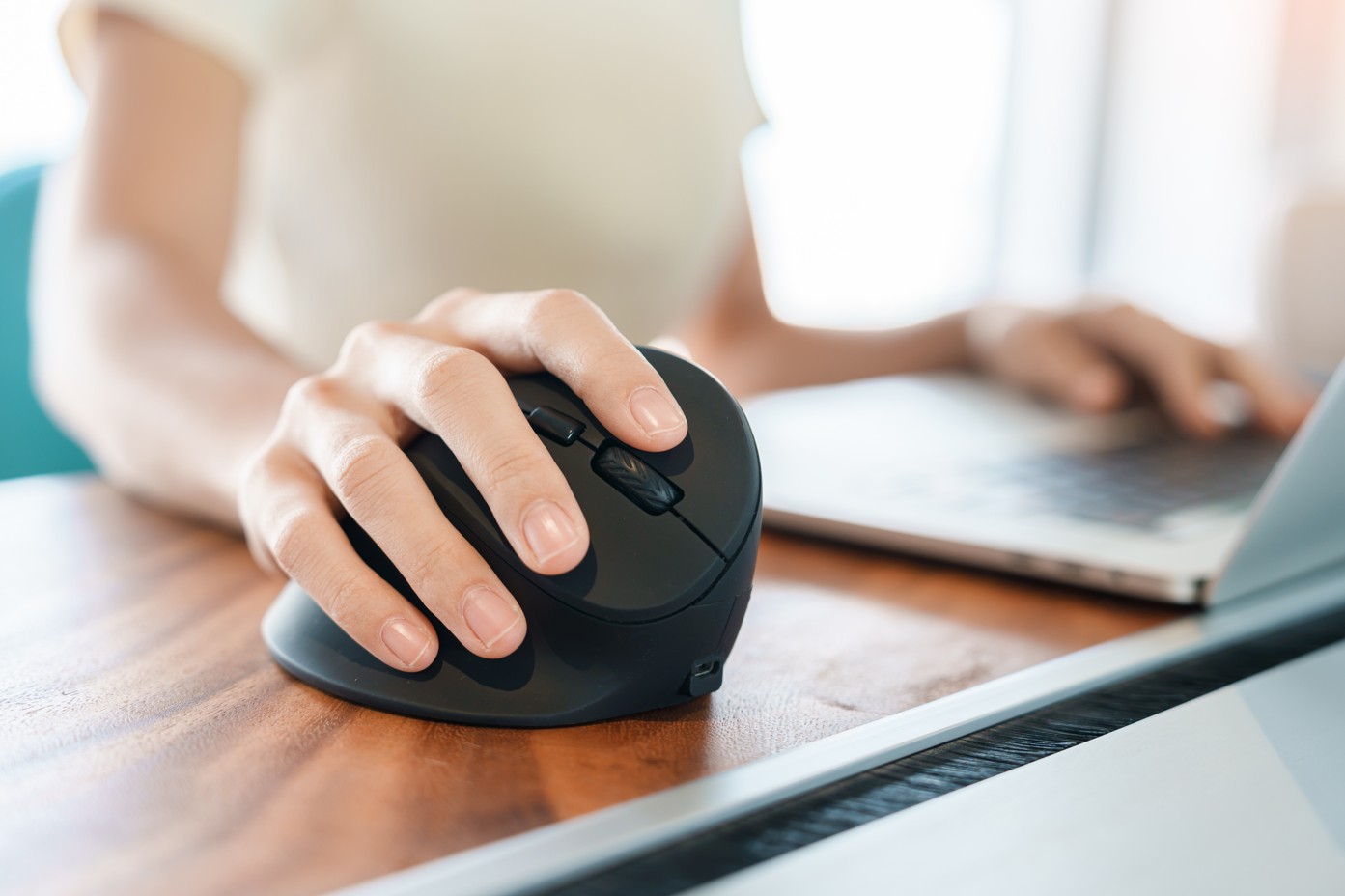
Understanding RSI: Why Your Regular Mouse Might Be Hurting You
If you feel tingling, numbness, or pain in your wrist or forearm after computer use, you’re not alone. RSI is on the rise in Australian offices and home workspaces. These conditions come from repeated movements and overuse, often leading to pain and weakness.
Your choice of a computer mouse can make a real difference. The right ergonomic mouse can help prevent and ease RSI, while using the wrong mouse can make symptoms worse.
The Problem with a Traditional Computer Mouse
In 2024, Australian workers filed 20,200 compensation claims for musculoskeletal and connective-tissue diseases. These injuries made up 14.5% of all claims, with each case leading to about 14 weeks off work.
Poor ergonomics, particularly with standard computer mice, contribute to many of these issues. Regular mouse use puts strain on the wrist and can lead to carpal tunnel syndrome, which sends about 195,000 Australians to their GP each year. The condition affects 2.7 per cent of the population, mostly women and those aged 40 to 50. These figures illustrate the prevalence and impact of CTS on Australian workers.
If you already feel pain at your desk, your equipment could be making it worse. Switching to ergonomic tools and smarter work habits can help break the cycle of strain.
How an Ergonomic Mouse Helps
An ergonomic mouse makes a real difference because it matches your hand’s natural shape and movement. This support keeps your wrist, hand, and forearm in a relaxed position, which reduces muscle strain and eases pressure on your nerves. As a result, you move more comfortably and efficiently for longer periods. Using an ergonomic mouse helps prevent RSI and can also ease pain if you already have symptoms.
Modern ergonomic mice come in Bluetooth, wireless, and USB versions to suit any setup. They work well for both prevention and recovery, making them a smart choice whether you want to improve your home office or upgrade your workplace for better health and comfort.
Learn more: Are Wrist Rests Good for You? How To Use A Wrist Rest.
Top Ergonomic Mouse Designs That Help With RSI
Here are some of our top ergonomic mouse solutions:
Best Trackball Mice
Kensington Pro Fit TB550 Rechargeable Trackball Mouse
The Kensington Pro Fit TB550 is a new arrival with a sculpted design and a unique 45° tilt. The sculpted design improves wrist and forearm alignment. This helps reduce muscle fatigue and discomfort over time.
A trackball mouse stays in place, so you move the cursor by rolling the ball. This reduces wrist movement and repetitive reaching. The TB550 offers wireless use with Bluetooth and 2.4GHz, seven programmable buttons, and a rechargeable battery for everyday convenience.
Kensington Orbit Wired Trackball with Scroll Ring
The Kensington Orbit offers effortless cursor movement with excellent accuracy. The large 40mm ball and ambidextrous design make it a fantastic choice for users who need to switch hands during recovery from injury.
The scroll ring and programmable buttons enhance productivity, and the included wrist rest provides extra support during long sessions. Its plug-and-play setup means you’ll be comfortable and up and running in minutes.
Best Vertical Ergonomic Mice
Evoluent V4 Vertical Mouse (Right Hand)
The Evoluent V4 is a favourite among users with carpal tunnel or ulnar nerve issues. The vertical design keeps your forearm in a handshake position, reducing twist and associated strain. This natural hand position helps ease tension in the wrist and forearm muscles.
The mouse is fully adjustable and offers corded or cordless options. If you’re prone to discomfort or want the best ergonomic mouse for RSI, this is a popular starting point.
Evoluent D Series Vertical Mouse
The D Series builds on everything users love about the V4, with an even more sculpted, modern shape and advanced adjustability. Available in three sizes, it fits your hand perfectly, helping to eliminate awkward finger movements and keep your hand supported throughout the day. Both corded and wireless versions are available to suit your preference.
Best Roller Mice
Contour RollerMouse Pro 3
For those who want to take ergonomic equipment to the next level, the RollerMouse Pro 3 eliminates the need to reach the side of your mouse. Instead, the mouse sits in front of your keyboard, and you use a roller bar for cursor movement and clicking.
Focus on how the mouse fits your grip and reduces discomfort during use. Pick ergonomic models with programmable buttons, adjustable DPI, and system compatibility to suit your needs. This small change helps protect your health and comfort at work.
Choosing the Best Ergonomic Mouse for RSI Relief
The best ergonomic mouse for RSI is the one that feels right in your hand and supports your unique needs. What works for your colleague or friend may not suit your hand size, grip, or type of injury. That’s why it’s crucial to test different options before deciding.
Consider the mouse’s design, how it fits your grip, and if it reduces discomfort. Ergonomic equipment is an investment in your health, so don’t settle for “good enough.” Choose features like programmable buttons, adjustable DPI, and system compatibility for the best fit.
If you’re not sure where to start, visit our Perth showroom. Our specialists can guide you based on your symptoms and work habits. Remember, comfort is personal, and your health is worth prioritising.
Give Your Hands the Care They Deserve
Traditional computer mice may be causing harm without you even realising it. Making the switch to an ergonomic mouse is a proactive step toward long-term wrist and joint health.
We understand that choosing the right ergonomic mouse is a personal decision. Your comfort is our priority. Contact us today and don’t wait for pain to tell you it’s time for a change.